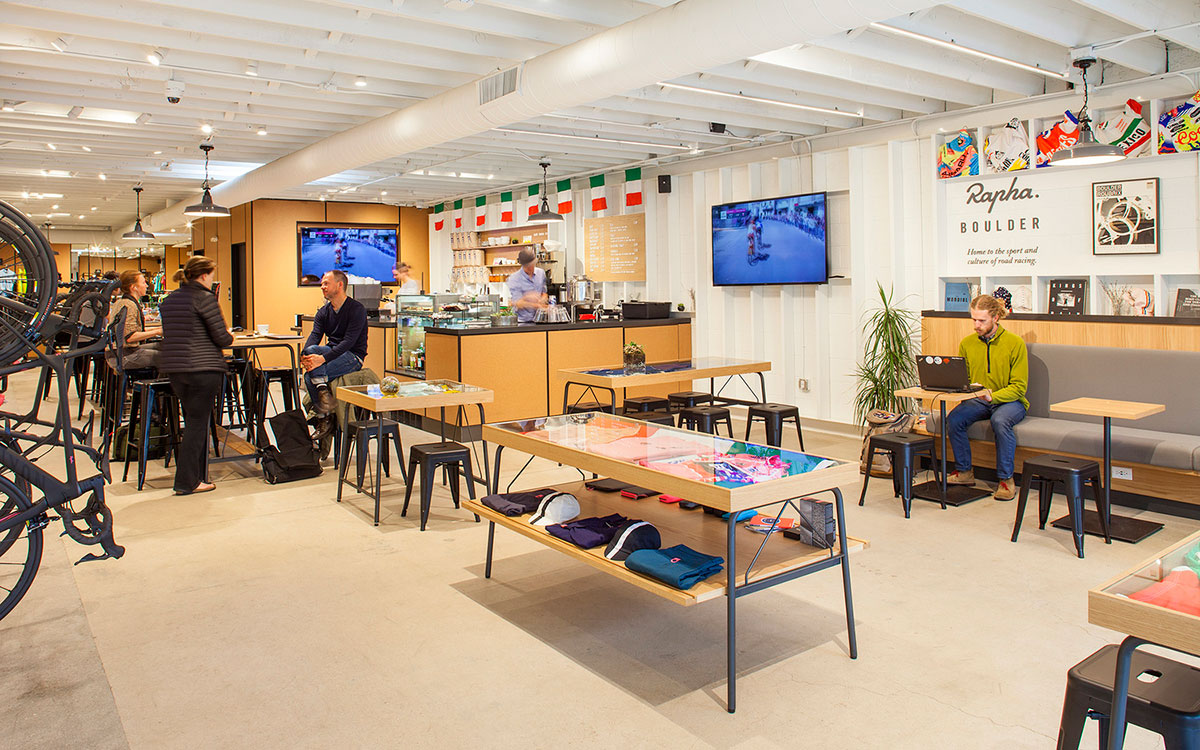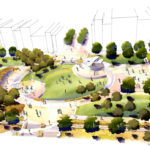Design at the intersection of health, wellness, and retail
Consumers are time-conscious, and at the same time, they’re shifting to a lifestyle defined by health and wellness. As a result, the concept of well-being is taking on a whole new meaning in the world of retail.
Today’s retailers are looking to strike a balance between efficient shopping and the desire to slow down, indulge, and connect. Thus, in this age of convenience, retail design must meet consumers where they are, both physically and emotionally, throughout their shopping journey. Experiences — in particular those that are more holistic — are the new allure.
Here are five ways we’re seeing both convenience and wellness incorporated into the new retail experience.
Multi-dimensional spaces
Retail environments have adapted to encompass lifestyle perks with time-saving, health-enhancing features. Grocery stores not only stock organic, better-for-you items, but also offer fresh smoothies (think Whole Foods juice bars), seating areas for rest and relaxation, and wellness departments where patrons can seek advice and/or be pampered.
Shopping spaces are being designed to be modular, flexible, and most importantly, healthful. “The name of the game is human-centered design,” says Cathrine Tait, an architect in our Austin office. “It’s fully understanding how the customer is navigating the aisles and being able to account for what that experience looks like — and how it should feel.”
Take, for example, the move by Mall of America to open a walk-in healthcare clinic. The clinic will be available to both visitors and employees of the mall to treat minor ailments and address common travel-related illnesses. With its location inside the mall, the clinic is convenient and acts to layer self-care into the retail experience.
Similarly, beauty departments are emerging in nonstandard locations. These creative additions can include mobile or modular fixtures, which provide flexibility, allowing a service or product to physically meet the customer where they are in the store.

A juice bar at Whole Foods Market Las Colinas is a store-within-a-store option that gives consumers the opportunity to indulge in healthy eating while they shop.
A celebration of the senses
Some retailers are taking a sensory experience and using it to define an entire retail concept. This layering of experience can be accomplished in varying degrees, but always with the intention of engaging consumers in a personal, authentic way.
In the grocery store beauty department, shoppers can test out products in the store. Greeted by the mobile vanity, they may stop to sit for a moment — a behavior that is unique in the aisles of a supermarket. Grocery retailers are including lounge chairs and flexible fixtures to encourage shoppers to leave the cart behind, linger, and indulge.
Other retailers make experience the crux of their brand offerings. Rapha Cycling Club, a cycling community and retail dream destination, has all the components of an active lifestyle housed under a single store roof. The retailer is innately wellness-driven, but adds in the appeal of taste, touch, and feel. Customers are encouraged to gather to watch live events, browse new apparel, sip espresso, and connect over their latest rides.

Blending fitness, retail, and community, Rapha Cycling Club has centered their physical store locations around wellness.
Thoughtful incorporation of technology
Technology plays a large role in just about all of today’s retail environments. In the beauty department example, we might see augmented reality used to enhance the shopper experience in the form of a “smart mirror.” Walgreens is testing similar technology to guide purchases in their refrigerated aisles. More and more, this type of technology is designed into retail fixturing.
Features like the smart mirror represent just one of many ways retailers can actively engage customers with technology, but more passive tactics are also being used. For example, in that same beauty department, monitors might quietly play tutorials or communicate tips and tricks, and “social media moments” are scattered throughout. The goal is to bridge the gap between consumers of differing needs (including those who appreciate the independence of the online shopping experience) by supplementing the in-store experience.
While layering in technology can be critical to establishing relevance and intrigue, the addition of tech installments should be done selectively and strategically. Consumers are still spending more in stores because they value the physical interactions and the emotional gratification of a brick-and-mortar environment. Whether human or product interaction, technology should be used to enhance experiences, not replace them.
Healthful design decisions
Decisions that go beyond the primary product or service to improve the shopping experience from a personal health perspective are invaluable. Consider Coated, the first clean-air nail salon in Austin, Texas. With the primary goal being complete relaxation, the space was carefully engineered to remove chemicals, dust, and toxins with systems that function at the source, i.e., “hand level.”
This can be taken even further with an overall heightened emphasis on daylight, air quality, and nontoxic material selections. Wellness-related factors that weigh heavily in design decisions for workplace and residential environments should be considered with equal weight in all spaces, including brick-and-mortar retail.
Moveable fixtures and HVAC at the source provide health benefits and comfort for customers and staff at Coated, Austin’s first clean-air salon.
Inspiring social interactions
Studies show social relationships and human interaction contribute to better health and longer lives. With endless options for purchasing goods online, retailers must make an extra effort to encourage people to come together for in-person experiences.
Physical stores must be as interesting as the merchandise they house, and this often translates into “instagrammable” spaces designed with social sharing in mind. Like Glossier’s Seattle pop-up shop whose interior is outfitted to resemble the local Pacific Northwest landscape, stores are becoming creative displays that encourage people to share their experience both digitally and physically.
With this increased attention to store design also comes the very intentional decision to incorporate various forms of gathering spaces. When social interactions occur, the payoff for visiting a store increases, encouraging return visits and the desire to linger. Retailers are creating new experiential concepts, such as Crate and Barrel’s The Table at Crate, which centers on socializing as a way to bring customers offline and into an enticing environment.
A few closing thoughts
Retailers benefit from the ability to market these design moves, and consumers benefit from spending time in healthier environments. In an era where people feel an increasing lack of time, where personal and work lives blur, and where everyone is “always on,” the result is a tendency for shoppers to seek unique experiences and sources of wellness in all places they frequent. And retail providers are in the perfect position to accommodate both.

With more than 30 years of experience in retail design, associate principal Sheri Blattel co-leads Cushing Terrell’s retail team, driving thought leadership strategy and overseeing some of the firm’s largest, most complex projects for clients that include Whole Foods Market, Crate and Barrel, and H-E-B.


